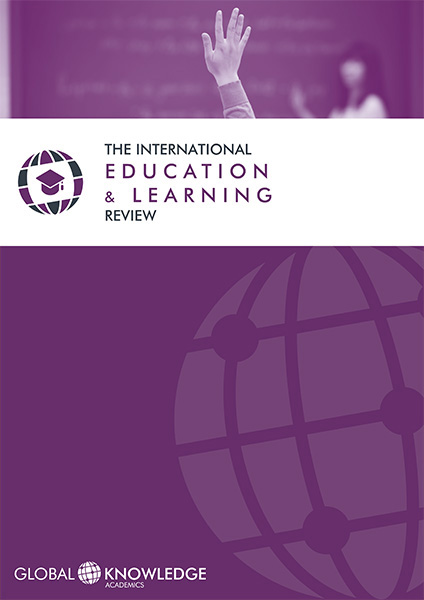Principal's Actions Through Distributed Leadership Dimensions: A Case Study of Two Public Spanish Schools
DOI:
https://doi.org/10.37467/gka-edurev.v1.1967Palabras clave:
Distributed leadership, Dimensions, Principal, Qualitative study, Case study, Spanish Publics SchoolsResumen
Descargas
Estadísticas globales ℹ️
|
290
Visualizaciones
|
73
Descargas
|
|
363
Total
|
|
Citas
Arias, A., & Cantón, I. (2006). Leadership and management of educational centers. Barcelona: Davinci Continental.
Bennett, N. (2003). Distributed leadership Full report. United Kingdom: Nottingham. National College for School Leadership.
Bolden, R. (2011). Distributed leadership in organizations: A review of theory and research. International Journal of Management Reviews, 13(3), 251-269.
Bolívar, A., & San Fabián, J. (2013). LOMCE: A new law to improve educational quality? Organization and Educational Management, 21(1), 7-11.
Day, D. (2000). Leadership development: a review in context. Leadership Quarterly, 11(1), 581–613. DeFlaminis, J., Abdul-Jabbar, M., & Yoak, E. (2016). Distributed leadership in schools: A practical guide for learning and improvement. New York: Routledge.
Educa Madrid (2018). http://www.madrid.org/cs/Satellite?pagename=PortalEducacion/ Page/EDUC_home
Elmore, R. (2005). Accountable leadership. The Educational Forum (6) 2, 134-142.
García, I. (2018). Perceptions of schools’ principals through distributed leadership: case study of two public Spanish schools. Revista Lusófona de Educação 1(7):33-61.
García, I. (2019). El liderazgo distribuido y la percepción de los equipos directivos de las escuelas públicas de educación primaria madrileñas.(Tesis doctoral). Pablo Olavide University, Spain.
Gronn, P. (2002). Distributed Leadership. Second International Handbook of Educational Leadership and Administration, 1(2) 653-696.
Hargreaves, A., & Fink, D. (2000). The Three dimensions of reform. Educational Leadership 57(7), 30-34.
Harris, A. (2009). Distributed leadership: what we know. In: Harris, A. (ed.), Distributed Leadership: Different Perspectives (pp. 49-68, Ch.3). Dordrecht: Springer.
Harris, A. (2012). Distributed leadership: implications for the role of the principal. Journal of Management Development, 31(1), 7-17.
Harris, A., & DeFlaminis, J. (2016). Distributed leadership in practice: Evidence, misconceptions and possibilities. Management in Education, 30(4), 141-146.
Hulpia, H., Devos, G., & Van Keer, H. (2009). The influence of distributed leadership on teachers’ organizational commitment: A multilevel approach. The Journal of Educational Research, 103(1), 40-52.
Leithwood, K., Day, C., Sammons, P., Harris, A., & Hopkins, D. (2006). Seven strong claims about successful school leadership. Nottingham: DfES/NCSL.
Leithwood, K., & Seashore-Louis, K. (2011). Linking leadership to student learning. San Francisco: John Wiley y Sons.
Pont, B., Nusche, D., & Moorman, H. (2009). Improve school leadership: policy and practice. Paris: OECD Publishing.
Ross, J., & Berger, M. (2009). Equity and leadership: Research-based strategies for school leaders. School leadership and management, 29(5), 463-476.
Spillane, J. (2012). Distributed leadership. San Francisco: Jossey-Bass.
Spillane, J. (2017). Leadership and Learning: Conceptualizing Relations Between School Administrative Practice and Instructional Practice. In: How School Leaders Contribute to Student Success (pp. 49-67, Ch 2). Springer International Publishing.
Spillane, J., & Diamond, J. (2007). Distributed leadership in practice. New York: Teachers College Press.
Spillane, J., Camburn, E. & Pareja, A. (2007). Taking a Distributed Perspective to the School Principal’s Workday. Leadership and Policy in Schools, 6(1), 103-125.
Stake, R. (2013). Qualitative / naturalistic research: epistemological problems. Education and Selection, 7(1), 19-27.
Descargas
Publicado
Cómo citar
Número
Sección
Licencia
Los autores/as que publiquen en esta revista aceptan las siguientes condiciones:
- Los autores/as conservan los derechos de autor.
- Los autores/as ceden a la revista el derecho de la primera publicación. La revista también posee los derechos de edición.
- Todos los contenidos publicados se regulan mediante una Licencia Atribución/Reconocimiento-SinDerivados 4.0 Internacional. Acceda a la versión informativa y texto legal de la licencia. En virtud de ello, se permite a terceros utilizar lo publicado siempre que mencionen la autoría del trabajo y a la primera publicación en esta revista. Si transforma el material, no podrá distribuir el trabajo modificado.
- Los autores/as pueden realizar otros acuerdos contractuales independientes y adicionales para la distribución no exclusiva de la versión del artículo publicado en esta revista (p. ej., incluirlo en un repositorio institucional o publicarlo en un libro) siempre que indiquen claramente que el trabajo se publicó por primera vez en esta revista.
- Se permite y recomienda a los autores/as a publicar su trabajo en Internet (por ejemplo en páginas institucionales o personales), una vez publicado en la revista y citando a la misma ya que puede conducir a intercambios productivos y a una mayor y más rápida difusión del trabajo publicado (vea The Effect of Open Access).













